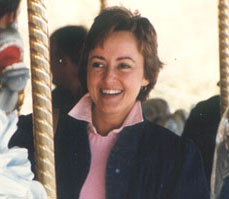 This fall promises to be a great one
if you enjoy the changing colors of the trees around us.
We’ve had plenty of rain, so the trees are not
stressed, and warm sunny days with cool nights also help
out. But why are some years good for fall color, when
others are not? Many factors such as soil conditions,
weather, and genetics all contribute to the equation.
This fall promises to be a great one
if you enjoy the changing colors of the trees around us.
We’ve had plenty of rain, so the trees are not
stressed, and warm sunny days with cool nights also help
out. But why are some years good for fall color, when
others are not? Many factors such as soil conditions,
weather, and genetics all contribute to the equation.
The whole process is a slow one and
begins as the length of the nights increase. This change
in the light causes the plant to produce phytochrome.
Phytochrome is the chemical that starts the process of
dormancy. A layer of cells is produced between the
branch of the tree and the leaf stalk. This layer is
called the abscission layer and it blocks the passage of
water and nutrients (carbohydrates) to and from the
leaf. The production of the green pigment, chlorophyll,
which is the predominant pigment, begins to break down.
Without the chlorophyll to color the
leaves green we begin to see the other pigments,
carotenoids, give the leaf its yellow, orange and brown
color. Now here is where the genetics fits in. Some
trees also have the ability to form another pigment
known as anthocyanin, which gives leaves a red or purple
color. For anthocyanins to form there must be sugar
present so any weather condition that enhances the
production and accumulation of sugars in the leaf helps
with the intensity of the red color.
Sunny days result in a high
production of carbohydrates in the leaf and cool nights
help to break those carbohydrates down into sugars. The
cool nights also help to keep those sugars in the leaf
instead of going to other parts of the plant. When the
skies are cloudy and the nights warm, less sugars are
produced and more are moved from the leaf, leaving us
with less intense color.
As the abscission layer gets bigger
it divides into two layers. One layer is protective and
forms on the branch. The other is a separation layer and
forms on the leaf stalk (petiole). Once both layers form
there is not much left to hold the leaf in place and
down it comes. A popular myth about fall color is that
we need a frost to produce good fall color. Killing
frosts and freezing temperatures stop the color change
and kill the leaves. So let’s hope the nights stay
cool (40-45 degrees F.), but not cold.
Hope this helps demystify why a
wonderful display of fall color is predicted for this
year. Enjoy it while it lasts. Soon enough we’ll have
to be raking all those leaves up and it’s nice to
think that at one point we really did enjoy them.